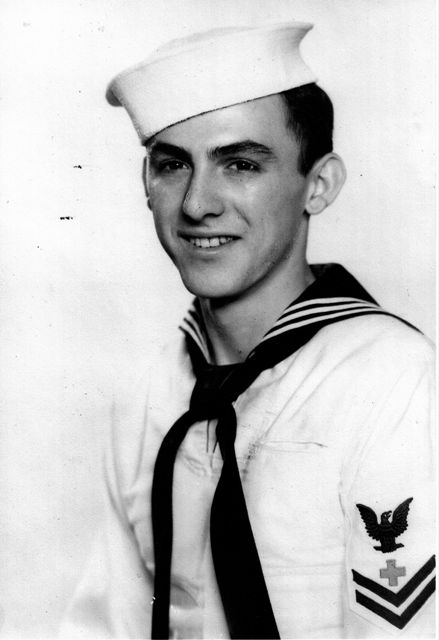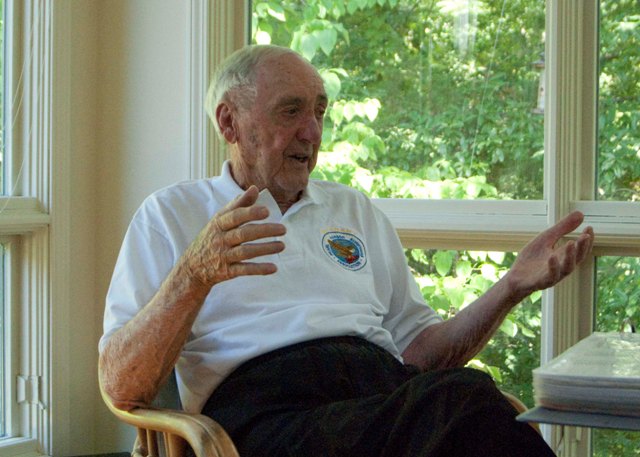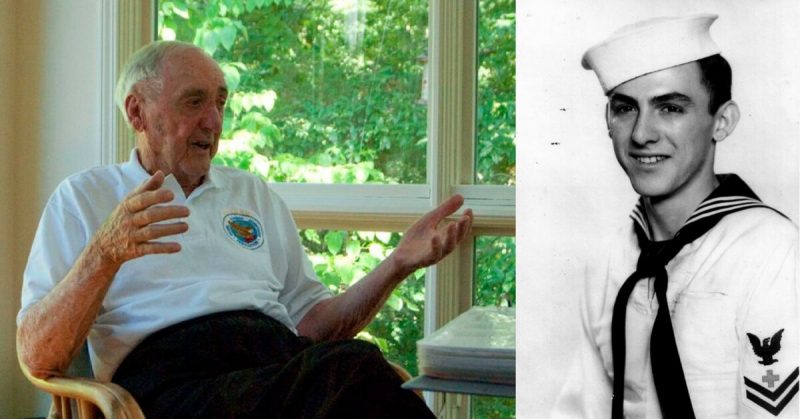War History online proudly presents this Guest Piece from Jeremy P. Ämick, who is a military historian and writes on behalf of the Silver Star Families of America.
During a recent interview, while basked in the glow of the sunroom of his Jefferson City, Mo., home, Bill McAnany shared the story of his participation in some of the most harrowing events that unfolded during World War II.
Taking the occasional pause, the Pearl Harbor survivor pointed to pictures on the wall displaying the ships he has served on—a conversation brimming with details that refused to yield to the passage of years.
A native of Wood River, Ill., McAnany enlisted in the Navy in 1938 in pursuit of opportunities not available in his hometown.
“I wanted to get an education,” said the 92-year-old, “and I figured if I joined the Navy, I would at least be able to learn a trade.”
The young recruit completed his basic training and was accepted for training at the hospital corps school after learning his only other option at the time would be to become a seaman aboard a ship.
“The (hospital corps) was looking for volunteers, so I said ‘sign me up,’” McAnany said.
The next three years, he went on to complete his hospital corps training, attended an X-Ray technician school and worked at naval hospitals in Virginia and Philadelphia.
In August 1941, however, his land-based assignments would find delay when he received orders to report to the USS Solace—a former cruise ship that was converted to a 400-bed hospital ship.

The ship sailed to the west coast and arrived at Pearl Harbor, Hawaii, on October 27, 1941, where it remained until the fateful events that unfolded on the morning of December 7, 1941.
That morning, McAnany and some friends were on a tour of the island when the first wave of attacks began.
“We saw anti-aircraft bursts going off and a plane fall out of the sky,” McAnany recalled. “I wondered what in the hell was going on.”
He and some fellow Corpsman were able to make it to Ford Island, which was hit in the attacks, and began working out of the dispensary. For the next two days, they provided care to injured service members until they were relieved and able to return to the USS Solace.
McAnany explained that the Solace remained in the harbor through mid-March 1916, and that the crew was pulling bodies out of the water until their departure.

The young sailor’s participation in such a historic event would not be the only footnote in his career; by the time the war ended, McAnany had supported campaigns such as the invasion of Iwo Jima and the Battle of Midway, and served on ships such as the USS Samaritan—a WWI transport ship converted to a 700-bed hospital ship.
“The Samaritan, “McAnany said, “was really a piece of junk. If we had to be at sea for more than three days, it would break down”
Throughout the next several years, he served briefly in the Philippines and later as an X-Ray technician in Philadelphia and at Camp Lejune, N.C., but returned to the all-too-familiar sea duty in 1949, when assigned to the USS Mount Olympus.
“I was basically a bookkeeper and pill dispenser,” McAnany smiled.
He later attended school in St. Louis where he learned the repair and maintenance of medical electrical equipment, and was able to apply his newly acquired skills at a naval hospital in California until March 1953.
“Then it was time for sea duty again,” he laughed.
The next year found the now-experienced sailor aboard the USS Repose in support of the Korean War. As McAnany notes, the hospital ship provided direct care to injured service members and transported the more seriously wounded to a naval hospital in Japan.
Returning to the states in 1954, he spent the remaining years of his naval career working for the 11th Naval District in California in addition to a brief stint aboard the USS Eldorado.
But in 1958, he “knew it was just time to go,” and he made the decision to retire from the service.
In the years following his departure from the Navy, McAnany enjoyed a full career that employed his naval training—working for various companies specializing in the sales and service of medical equipment.
Now, the retired sailor and his wife, Linda, enjoy the quiet life in Jefferson City, Mo., and McAnany mirthfully notes that now one of his greatest enjoyments is playing golf.
Despite his exposure to some of the most distressing events of World War II, McAnany asserts that there is a lesson in humanity that emerges from his military experiences.
“After seeing how some of these guys would come in critically wounded, fighting for breath just to stay alive … well, you learn about the value of life.”
He added, “You quickly realize that life is a gift not meant to wasted.”
By Jeremy P. Amick
